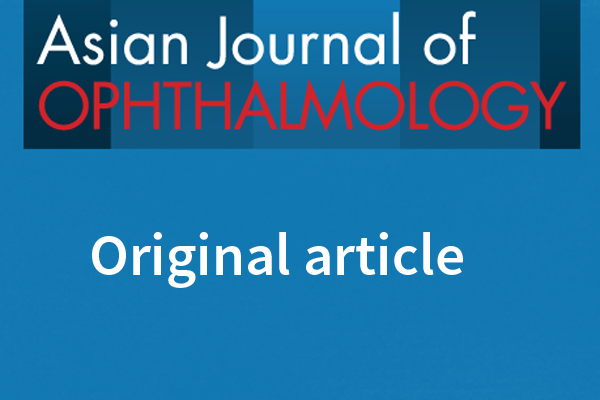Dacryocystorhinostomy for the treatment of nasolacrimal duct obstruction: a pilot trial to assess impact on coexisting sinus symptoms
Abstract
Purpose: To report on coexistent sinus symptoms in a population of patients who underwent endonasal dacryocystorhinostomy (DCR) surgery for nasolacrimal duct obstruction (NLDO) in a pilot study designed to test and refine methods and to estimate patient sample size for a larger multicentre randomised trial.
Methods: Ninety-four consecutive patients with NLDO who underwent endonasal DCR by three surgeons in both public and private practice over a two-year period were included in this study. Questionnaires were given preceding DCR surgery and at 10 weeks post-surgery. Sinus symptoms including sinusitis, nasal congestion, hyposmia, nasal discharge, and facial pressure were assessed in the questionnaire. All subjects underwent primary endonasal DCR and all patients underwent the same post-operative regimen.
Results: Questionnaire responses revealed that 48/94 (51%) patients had one or more sinus symptoms prior to DCR surgery. Ten-week post-DCR follow-up questionnaires were obtained from 77/94 (82%) patients. About 20/31 (65%) patients with one or more sinus symptoms prior to DCR surgery reported resolution of coexisting sinus symptoms by 10 weeks post-DCR surgery.
Conclusion: The data from this pilot study suggest that approximately half of patients attending for NLDO have coexisting sinus symptoms. There was some loss to follow-up. This pilot study highlighted the need for a validated patient questionnaire, longer length of follow-up, control groups for surgical intervention, and use of perioperative medications. Any clinical trial designed to assess the impact of endonasal surgery on sinus symptoms would need to enrol several hundred patients in order to reach a statistically valid conclusion.
References
Smirnov G, Tuomilehto H, Kokki H, et al. Symptom score questionnaire for nasolacrimal duct obstruction in adults—a novel tool to assess the outcome after endoscopic dacryocystorhinostomy. Rhinology. 2010;48(4):446-451.
Leong SC, Macewen CJ, White PS. A systematic review of outcomes after dacryocystorhinostomy in adults. Am J Rhinol Allergy. 2010;24(1):81-90.
Eyigor H, Unsal AI, Unsal A. The role of accompanying sinonasal abnormalities in the outcome of endonasal dacryocystorhinostomy. Am J Rhinol. 2006;20(6):620-624.
Penttila E, Smirnov G, Seppa J, Tuomilehto H, Kokki H. Validation of a symptom-score questionnaire and long-term results of endoscopic dacryocystorhinostomy. Rhinology. 2014;52(1):84-89.
Soler ZM, Mace J, Smith TL. Symptom-based presentation of chronic rhinosinusitis and symptom-specific outcomes after endoscopic sinus surgery. Am J Rhinol. 2008;22:297-301.
Young J, Frenkiel S, Tewfik MA, Mouadeb DA. Long-term outcome analysis of endoscopic sinus surgery for chronic sinusitis. Am J Rhinol. 2007;21:743-747.
Snell RS, Lemp MA. Clinical Anatomy of the Eye. Oxford: Blackwell Scientific Publications; 1989.
Paulsen F. The human nasolacrimal ducts. Adv Anat Embryol Cell Biol. 2003;170:III-XI, 1-106.
Croitoru K, Bienenstock J. Characteristics and functions of mucosa-associated lymphoid tissue. In: P. L. Ogra JM, Lamm ME, Strober W, McGhee JR, Bienenstock J (Eds), Handbook of Mucosal Immunology. San Diego: Academic Press; 1994:141-151.
Tauber S, Nerlich A, Lang S. MALT lymphoma of the paranasal sinuses and the hard palate: report of two cases and review of the literature. Eur Arch Otorhinolaryngol. 2006;263(1):19-22.
Cesta M. Normal structure, function, and histopathology of mucosa associated lymphoid tissue. Tocicol Pathol. 2006;34:599-608.
Shams PN, Selva D. Acute post-operative rhinosinusitis following endonasal dacryocystorhinostomy. Eye. 2013;27(10):1130-1136.

Copyright (c) 2020 Ankur Mehta, Wan Yi, Arjuna Ananda, Raf Ghabriel

This work is licensed under a Creative Commons Attribution 4.0 International License.
Authors who publish with this journal agree to the following terms:
- Authors retain copyright and grant the journal right of first publication, with the work twelve (12) months after publication simultaneously licensed under a Creative Commons Attribution License that allows others to share the work with an acknowledgement of the work's authorship and initial publication in this journal.
- Authors are able to enter into separate, additional contractual arrangements for the non-exclusive distribution of the journal's published version of the work (e.g., post it to an institutional repository or publish it in a book), with an acknowledgement of its initial publication in this journal.
- Authors are permitted and encouraged to post their work online (e.g., in institutional repositories or on their website) prior to and during the submission process, as it can lead to productive exchanges, as well as earlier and greater citation of published work (See The Effect of Open Access).


